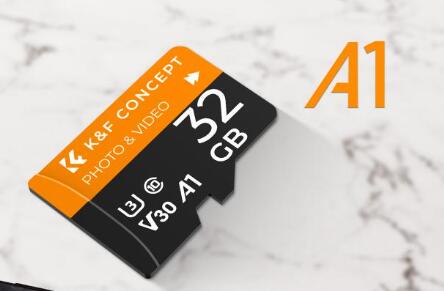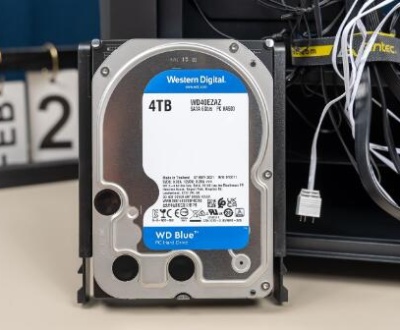Formatting a micro SD card is a common task that can help improve performance, free up space, or change the file system for compatibility with various devices. The exFAT (Extended File Allocation Table) file system is ideal for SD cards larger than 32GB, especially for use with modern devices like smartphones, cameras, and tablets.
1. exFAT
Advantages of exFAT
exFAT is a file system developed by Microsoft, primarily designed for flash drives, including micro SD cards. Here are some advantages:
Supports Large Files: exFAT can handle files larger than 4GB, making it suitable for HD videos and large applications.
Cross-Platform Compatibility: Works seamlessly with both Windows and macOS, making file transfers between different operating systems easier.

Efficient Storage: Optimized for flash memory, exFAT reduces the wear on the storage device and improves performance.
When to Use exFAT
When you plan to use the micro SD card with devices that require large file transfers.
If your SD card is larger than 32GB, as FAT32 has limitations on file size and partition size.
When you need compatibility across various operating systems.
2. Preparing to Format
Before you start the formatting process, it’s essential to prepare adequately to avoid data loss and ensure compatibility.
Backup Your Data
Transfer Files: Ensure all important files on your micro SD card are backed up. You can copy them to your computer or another storage device.
Check Hidden Files: Ensure that hidden files are visible so that you don’t miss anything crucial.
Check Your Device Compatibility
Verify that the devices you intend to use the micro SD card with support exFAT. Most modern devices do, but it’s always good to confirm.
3. How to Format a Micro SD Card to exFAT
Here’s a detailed guide on how to format your micro SD card using different operating systems.
On Windows
Insert the Micro SD Card:
Use a card reader or insert it directly into your laptop or computer.
Open File Explorer:
Press Windows + E to open File Explorer.
Locate your micro SD card in the list of drives.
Format the Card:
Right-click on the micro SD card and select Format from the context menu.
In the Format window, select exFAT from the File system dropdown menu.
Optionally, you can name the card in the Volume label field.
Ensure Quick Format is checked to speed up the process.
Click on Start to begin formatting.
Confirm Formatting:
A warning will appear informing you that all data will be erased. Confirm to proceed.
Completion:
Once the formatting is complete, a message will appear. Click OK and close the window.
On macOS
Insert the Micro SD Card:
Use an SD card slot or an external card reader.
Open Disk Utility:
Go to Applications > Utilities > Disk Utility.
Select the Micro SD Card:
In Disk Utility, locate your micro SD card in the sidebar.
Format the Card:
Click on the Erase button at the top.
In the Format dropdown, select exFAT.
Optionally, you can provide a name for the card in the Name field.
Click Erase to begin formatting.
Completion:
Once done, the card will be formatted to exFAT. Click Done to finish.
Using a Third-Party Tool
If you prefer using third-party software, tools like MiniTool Partition Wizard, AOMEI Partition Assistant, or SD Card Formatter can also format your micro SD card.
Download and Install the Software:
Choose a reputable tool and install it on your computer.
Launch the Application:
Open the formatting software and locate your micro SD card.
Format the Card:
Select the micro SD card, choose the exFAT file system, and follow the software prompts to complete the formatting process.
4. Verifying the Format
After formatting your micro SD card, it’s important to verify that the process was successful.
Check File System Type
On Windows:
Right-click the micro SD card in File Explorer and select Properties. Look for the File system type to confirm it says exFAT.
On macOS:
Open Disk Utility and select the micro SD card. The file system will be displayed in the information panel.
Testing the Card
To ensure everything works correctly, try transferring a large file (over 4GB) to the micro SD card. If it transfers successfully, the exFAT format is functioning as intended.
Formatting your micro SD card to exFAT can enhance compatibility and performance, especially for larger files and modern devices. By following this guide, you should be able to format your card successfully while avoiding data loss. Remember to back up your data, verify the format after completion, and be prepared to troubleshoot any issues that may arise.
About us and this blog
Panda Assistant is built on the latest data recovery algorithms, ensuring that no file is too damaged, too lost, or too corrupted to be recovered.
Request a free quote
We believe that data recovery shouldn’t be a daunting task. That’s why we’ve designed Panda Assistant to be as easy to use as it is powerful. With a few clicks, you can initiate a scan, preview recoverable files, and restore your data all within a matter of minutes.

 Try lt Free
Try lt Free Recovery success rate of up to
Recovery success rate of up to









